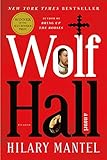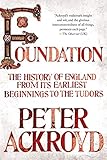
 One book blew me away this year: Lucia Berlin’s A Manual For Cleaning Women. But I had a lot of dead Englishmen to revel with first. It must have been sitting through two inferior takes on Wolf Hall this spring that set me off: an awful production on Broadway; a far better but still tedious rendering on PBS. That sent me back to the books, flipping through to find the passages with my most feverish underlines, taking note of how masterfully Hilary Mantel brought the same scenes to life, with imagery, interior dialogue and delicious prose. I reread long stretches of both books in the series — can’t wait for the third.
One book blew me away this year: Lucia Berlin’s A Manual For Cleaning Women. But I had a lot of dead Englishmen to revel with first. It must have been sitting through two inferior takes on Wolf Hall this spring that set me off: an awful production on Broadway; a far better but still tedious rendering on PBS. That sent me back to the books, flipping through to find the passages with my most feverish underlines, taking note of how masterfully Hilary Mantel brought the same scenes to life, with imagery, interior dialogue and delicious prose. I reread long stretches of both books in the series — can’t wait for the third.

 I literally couldn’t wait. I found myself gobbling up books connected to that era, or connected to the connections. Peter Ackroyd’s Foundation: The History of England from Its Earliest Beginnings to the Tudors was illuminating, but frustrating — especially for his penchant for lathering praise on the most dickish of kings. I was far more satisfied with Dan Jones’s The Plantagenets. I’ve OD’d on the period a bit for now, but when I return to the histories, it will be to his series. Foundation was best at its prehistoric and pre-Norman passages, which finally removed a festering burr from my intellect. If the Saxons were the dominant half of Anglo-Saxons, how did the Angles get custody of the name? It’s always perplexed me. The short answer: proximity to their conquerors. The Angles controlled much of the east coast, so it was their kingdoms the Danes wiped out when they crossed the North Sea. So the island was AngleLand (or something like that) to the Danes. They didn’t rename the place when they discovered even more Saxons much further in. (The Jutes got left out completely, along with lots of lesser tribes.)
I literally couldn’t wait. I found myself gobbling up books connected to that era, or connected to the connections. Peter Ackroyd’s Foundation: The History of England from Its Earliest Beginnings to the Tudors was illuminating, but frustrating — especially for his penchant for lathering praise on the most dickish of kings. I was far more satisfied with Dan Jones’s The Plantagenets. I’ve OD’d on the period a bit for now, but when I return to the histories, it will be to his series. Foundation was best at its prehistoric and pre-Norman passages, which finally removed a festering burr from my intellect. If the Saxons were the dominant half of Anglo-Saxons, how did the Angles get custody of the name? It’s always perplexed me. The short answer: proximity to their conquerors. The Angles controlled much of the east coast, so it was their kingdoms the Danes wiped out when they crossed the North Sea. So the island was AngleLand (or something like that) to the Danes. They didn’t rename the place when they discovered even more Saxons much further in. (The Jutes got left out completely, along with lots of lesser tribes.)
 It was also Foundation that led me to Beowulf, at the same time I was discovering how much J.R.R. Tolkien had riffed on it from the prologue of The Fellowship: The Literary Lives of the Inklings. That was enough to entice me to a bookstore to thumb through the supposed literary abomination I had escaped in high school. “Never take a class that forces you to read Beowulf,” an older friend had sagely advised on his first trip home from college. I’m reconsidering everything I ever learned from him. Of course he was too young to enjoy the melodious Seamus Heaney translation. What a delight that turned out to be!
It was also Foundation that led me to Beowulf, at the same time I was discovering how much J.R.R. Tolkien had riffed on it from the prologue of The Fellowship: The Literary Lives of the Inklings. That was enough to entice me to a bookstore to thumb through the supposed literary abomination I had escaped in high school. “Never take a class that forces you to read Beowulf,” an older friend had sagely advised on his first trip home from college. I’m reconsidering everything I ever learned from him. Of course he was too young to enjoy the melodious Seamus Heaney translation. What a delight that turned out to be!
Sure it got repetitive, and heavy-handed, but that was half the joy of it — the window into the psyche of 8th- to 11th-century English aristocracy: the ideas they cherished, how they sought to (over) communicate them, and what they considered a great yarn. It was also eye-opening to discover how liberally Tolkien helped himself to the material. Shelob, in particular, was concocted by imaginations 1,000 years earlier, and I felt rumblings of Middle Earth nearly every page. Yet Tolkien made it all his own. Well done, J.R.R.
My first attempt at Anglo-Saxon also made it apparent how absurd the alternate label of Old English is. I planned to approach Beowulf the way I do William Shakespeare: attempt to cold read chunks of the original on the left, jumping over to explanations — or translation — when I got really frustrated. Not happening. The “Old English” on the left was not just old or archaic, it was a completely different language. Not a recognizable word, anywhere. All of which I should have understood already perhaps from the Plantagenet histories, or high school, but there’s nothing like confronting the actual text to see how far we’ve come in 1,000 years.

 And then I dove into the Henrys. I intend to get to all of them, but jumped ahead to start with Henry IV, Part 1. Good call. I can’t wait to start stealing from this! Shakespeare at the top of his form, in language, plot, and character. In spite of Falstaff. God, do I hate that guy. Never funny, always heavy-handed (a holdover from Beowulf?). Ugh. There’s a lot of the dufus in there, but the bursts surrounding him are brilliant enough to wipe out most of him from my memory.
And then I dove into the Henrys. I intend to get to all of them, but jumped ahead to start with Henry IV, Part 1. Good call. I can’t wait to start stealing from this! Shakespeare at the top of his form, in language, plot, and character. In spite of Falstaff. God, do I hate that guy. Never funny, always heavy-handed (a holdover from Beowulf?). Ugh. There’s a lot of the dufus in there, but the bursts surrounding him are brilliant enough to wipe out most of him from my memory.
Part 1 was so intoxicating, I plunged right into Part 2. Despite the naming convention, they are completely separate, self-contained plays. In fact, they’re more or less the same play: a complete rehash, replaying the same plot, ideas, and (mostly) cast — including His Vileness, Falstaff. With none of the inspiration or vitality. Half-hearted remake masquerading as sequel. So this is where Hollywood got it.
 And then I got my hands on A Manual for Cleaning Women. Wow. No kings or dukes or ladies in waiting losing their heads or fighting for the crown. No grand sweeping anything. And no boisterous narrator, showing off, nor boring MFA stories, full of pretty sentences about nothing. These characters remind me of Denis Johnson. They could fit snugly into Jesus’ Son, though Lucia Berlin wrote most of these stories earlier.
And then I got my hands on A Manual for Cleaning Women. Wow. No kings or dukes or ladies in waiting losing their heads or fighting for the crown. No grand sweeping anything. And no boisterous narrator, showing off, nor boring MFA stories, full of pretty sentences about nothing. These characters remind me of Denis Johnson. They could fit snugly into Jesus’ Son, though Lucia Berlin wrote most of these stories earlier.
Lucia gives us gripping tales about switchboard operators, cleaning ladies, and shy little Protestant girls trying to fit in at Catholic school. In the mission school in “El Tim,” the children tremble their morning prayers, the Latina girls flirting quietly, like muted birds, the boys cocking their plumed heads, decked out in brilliant yellows and turquoise, with V-neck sweaters and no shirts, exposing the crucifixes gleaming against their smooth brown chests. Berlin can sure set a scene. And bring it alive with boys trying hard to be hoods, “flipping a switchblade into a desk, blushing when it flipped and fell.”
Lucia Berlin was my mentor. She’s suddenly a sensation, but died 11 years ago, a virtual unknown. I’d read most of these stories, so I planned to skim a little and dip back into my favorites. I’m not much of a re-reader — I bore easily. But I’m transfixed, again, even deeper this time. I wasn’t a good enough writer to fully appreciate them the first pass. Half of what I do I learned from these stories, but I see now how much more there is to mine.
I read them mostly to enjoy. So much to savor. The flitting nuns and thuggish pachuco crucifixes in “El Tim” felt so vivid, but were all set-up for the emergence of the title character, who takes down Sister Lourdes, looking down at her with “his eyelashes creating jagged shadows down his gaunt cheeks. His black hair was long and straight. He smoothed it back with long slender fingers, quick, like a bird.” The girls were awed. “The pretty young girls who whispered in the restroom not of dates or love but of marriage and abortion. They were tensed, watching him, flushed and alive.”
How I feel every time I crack open this book.
More from A Year in Reading 2015
Don’t miss: A Year in Reading 2014, 2013, 2012, 2011, 2010, 2009, 2008, 2007, 2006, 2005
The good stuff: The Millions’ Notable articles
The motherlode: The Millions’ Books and Reviews
Like what you see? Learn about 5 insanely easy ways to Support The Millions, and follow The Millions on Twitter, Facebook, Tumblr.









